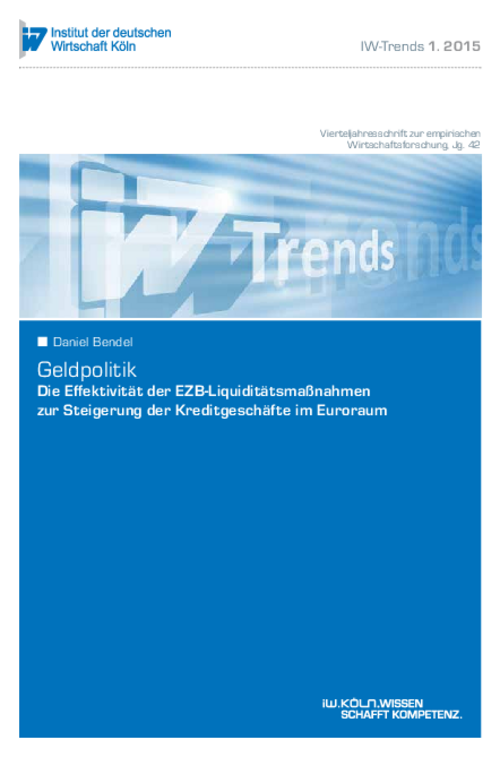Since the global finance market crisis of 2007 the European Central Bank has implemented a number of extraordinary steps to expand liquidity. The Bank’s objective has been to reduce uncertainty in the interbank market and to stimulate stagnant bank lending to the real economy in the Eurozone. With the help of a TVP VAR model the author examines how the effect of Central Bank liquidity on European lending volumes has changed over time. The financial crisis disrupted the normal transmission mechanism for the credit volume of private households, companies and banks, and in its aftermath normal transmission was only resumed for the volume of bank lending. At present, an expansion of the Central Bank’s balance sheets is particularly stimulating the interbank market but is having no direct influence on the volume of borrowing in the real economy. Nevertheless, there may yet be a delayed transmission with a positive effect on the volume of private-sector lending.

The Effectiveness of the ECB’s Liquidity Measures in Stimulating Credit Transactions in the Eurozone
IW-Trends


Daniel Bendel: Die Effektivität der EZB-Liquiditätsmaßnahmen zur Steigerung der Kreditgeschäfte im Euroraum
IW-Trends

More on the topic

German Wage Policy between Inflation and Stagnation: Are Conflicts with the Aims of Monetary Policy Looming?
After the economic and financial crisis of 2008/9, the German labour market soon began to recover, creating scope for a comparatively expansive wage policy.
IW
A Macroeconomic Analysis of Wage-Price Spirals
The subject of this Analysis is the forms that wage-price spirals can take and how they influence macroeconomic stability and inflationary trends in Germany.
IW